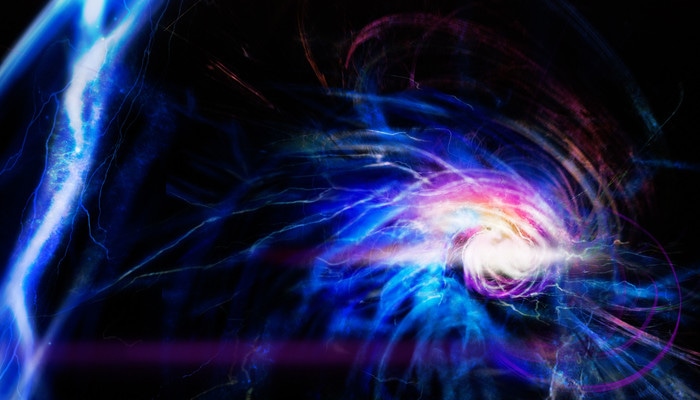Mar 7 2018
For the first time, researchers from Amherst College and Aalto University have developed a three-dimensional skyrmion in a quantum gas. Although the existence of skyrmion was theoretically speculated, only now it has been experimentally observed.
 Artistic impression of a quantum ball lighting. (Image credit: Heikka Valja)
Artistic impression of a quantum ball lighting. (Image credit: Heikka Valja)
In a cold and very thinly distributed quantum gas, the researchers have developed knots formed of the magnetic moments, or spins, of the integral atoms. The knots have been observed to have various properties of ball lightning, which some researchers consider to be comprised of intertwined streams of electric currents. The endurance of these knots might be the factor that enables ball lightning (i.e. a ball of plasma) survives for a fascinatingly longer time when compared to a lightning strike. The new outcomes could lead to innovative techniques of maintaining plasma untouched in a stable ball inside fusion reactors.
It is remarkable that we could create the synthetic electromagnetic knot, that is, quantum ball lightning, essentially with just two counter-circulating electric currents. Thus, it may be possible that a natural ball lighting could arise in a normal lightning strike
Dr Mikko Möttönen, Lead Resarcher - Aalto University
Möttönen also remembers having observed a ball lightning for a very brief time period in his grandparents’ house. Although historically, ball lightning has been observed many times, physical evidence is sparse.
The dynamics of the quantum gas is in correspondence with that of a charged particle that reacts to a ball lightning’s electromagnetic fields.
The quantum gas is cooled down to a very low temperature where it forms a Bose–Einstein condensate: all atoms in the gas end up in the state of minimum energy. The state does not behave like an ordinary gas anymore but like a single giant atom.
Professor David Hall, Lead Researcher - Amherst College.
To develop the skyrmion, initially, the spin of each atom is polarized to point upward along an applied natural magnetic field. Next, the applied field is instantaneously altered such that a point at which the field disappears seems to be in the middle of the condensate. As a result, the atoms’ spins start rotating in the new direction of the exerted field at their individual locations. Due to the fact that the magnetic field is directed in all probable directions near the field zero, the spins twist into a knot.
The knotted structure of the skyrmion comprises connected loops. The spins point toward a specific fixed direction at each of the loops. Although the knot can be moved or loosened, it is not possible to untie it.
“What makes this a skyrmion rather than a quantum knot is that not only does the spin twist but the quantum phase of the condensate winds repeatedly,” stated Hall.
If the direction of the spin in space gets altered, the speed of the condensate gets modified the same way in which the speed of a charged particle is modified in a magnetic field. Thus, the knotted spin structure generates an artificial, knotted magnetic field that precisely matches with the magnetic field in a ball lightning model.
“More research is needed to know whether or not it is also possible to create a real ball lightning with a method of this kind. Further studies could lead to finding a solution to keep plasma together efficiently and enable more stable fusion reactors than we have now,” elucidated Möttönen.
Creation of a 3D skyrmion
A side view of the experimental creation of a 3D skyrmion. The imaging method produces three regions where the spins point up (right), horizontally (center), and down (left). In the actual experiment, there is only a single condensate which contains all these different regions. Brighter color denotes a higher particle density. (Video credit: Tuomas Ollikainen)